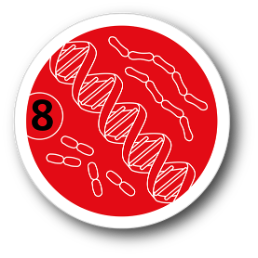- Soil microbial biodiversity: What influence do different farming systems and techniques have on the composition of microbiomes in the agroecosystem? Are there individual species, or groups of species, that are suitable as reliable indicators of soil fertility? Can soil sustainability and self-regulation be promoted via the targeted influencing of (soil- and plant-associated) microbiomes, and the improvement of their ecosystem functions?
- Targeted promotion of useful characteristics of microbiomes: What are the prerequisites for the promotion or use of beneficial microorganisms that e.g. suppress pathogens, diseases and pests (conservation biocontrol, targeted releases, etc.), or which positively influence the health of humans, plants and animals? Can their use result in yield increases and a reduction in the use of plant-protection products?
- New relationships and functions: Which hitherto-unused interactions between organisms in the ecosystems of the agriculture and food sector can be deliberately utilised to increase sustainability, safety and competitiveness along the entire value chain (pathogens, decomposers, antagonists, (protective) cultures, etc.)?
- Characterisation of the Agroscope strain collections and preservation of their biodiversity: Liebefeld, Wädenswil and Reckenholz all house microbial strain collections. The genomes of the strain collections must be characterised (with NGS), so as to identify their immense potential and enable their targeted use in the agriculture and food sector. How biodiverse are these genomes, and to what extent are they typical of Switzerland? What potentials for improving product quality, food safety and health arise from the knowledge of their properties?
- Characterisation of the ecosystem of selected fermented foods: What species or groups of species can be used in a targeted manner to improve the quality, safety and competitiveness of agricultural products (e.g. raw-milk cheeses)? How can fermentation increase the nutritional quality (bioavailability, metabolism) of foodstuffs?

Microbial biodiversity is of fundamental importance for the functioning of ecosystems. Key parameters in the agriculture and food sector can be significantly positively influenced by microbial communities (microbiomes). Plant, animal and human health as well as natural pest control, the decomposition of organic material, nutrient cycling and the processing of agricultural products via fermentation are just a few examples of their impact.
The characterisation of microbiomes, the identification of key species and the understanding of their functions and interactions form the basis for developing strategies for the targeted use and control of microbial biodiversity in the agriculture and food sector. The targeted manipulation of the microbiome (‘microbiome engineering’) is intended to harness the various positive effects of the use of microorganisms in the agriculture and food sector. This allows us to increase yields whilst reducing fertiliser and pesticide use, thereby protecting the soil and the environment and enhancing sustainability. With foods, controlling the microbiome enables us to influence fermentation processes or shelf life, thereby improving the quality, safety and competitiveness of agricultural products.
Scientific Objectives and Research Questions





